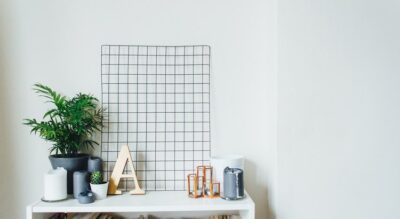Integrating Pest-Resistant Interior Design: A Holistic Approach to Creating Bug-Free Spaces

Introduction
Interior design goes beyond aesthetics; it plays a pivotal role in enhancing comfort, functionality, and overall well-being within living spaces. An often overlooked aspect of interior design is its potential to address pest-related challenges. Insects can not only damage property but also pose health risks. Incorporating pest-resistant strategies into interior design can create bug-free havens that seamlessly blend functionality with aesthetics.
Understanding the Insect Challenge
Insects are an ever-present concern in residential spaces. From cockroaches to ants, mosquitoes to bedbugs, these tiny creatures can disrupt the tranquility of a home. Successful interior design must account for factors that attract and facilitate insects, such as food sources, water accumulation, and shelter options.
Material Selection
The choice of materials significantly impacts pest vulnerability. Opting for pest-resistant materials like sealed hardwoods and glass minimizes cracks and crevices that insects could use as hiding spots. Seamless surfaces and airtight construction methods deter pests from infiltrating the living environment.
Proper Ventilation
Good ventilation is key to minimizing humidity, which many insects thrive in. Well-ventilated spaces help prevent moisture buildup, reducing the likelihood of mold growth and deterring pests like silverfish and roaches.
Strategic Lighting
Insects are naturally attracted to light sources, often swarming around windows and doors at night. Strategic lighting design can minimize this attraction. Using warm-colored bulbs or installing outdoor lighting away from entry points can help keep insects from congregating near living areas.
Sealing Entry Points
A thorough assessment of entry points—doors, windows, and gaps in walls—enables designers to seal off potential insect pathways. Weather stripping, door sweeps, and caulk can prevent pests from infiltrating the interior.
Storage Solutions
Well-designed storage solutions can deter insects by limiting their access to food sources. Airtight containers for food, proper waste disposal, and organized pantry spaces can effectively thwart pests like ants and rodents.
Furniture Placement
The positioning of furniture can impact pest movement. Placing furniture away from walls and potential pest entry points can create barriers that discourage insect travel.
Indoor Plants Selection
While indoor plants add aesthetic value, some can attract pests. Opting for plants with natural pest-repelling properties, such as lavender or mint, can help maintain a bug-free environment.
Integrated Pest Management
Incorporating pest-resistant measures into interior design is just one aspect of a holistic approach called Integrated Pest Management (IPM). IPM involves the careful combination of preventive measures, monitoring, and controlled interventions to minimize the use of chemical pesticides.
1. Regular Inspections: Identifying Early Indicators
Scheduled and thorough inspections are the backbone of an effective IPM strategy. Interior designers, in collaboration with pest management professionals, should routinely inspect spaces for signs of pests. Early identification of pest activity allows for swift intervention, preventing minor issues from developing into full-blown infestations. By being proactive, designers can address vulnerabilities and implement necessary adjustments to discourage pests from infiltrating the living space.
2. Natural Repellents: Tapping into Nature’s Defenses
Harnessing the power of nature’s own deterrents is a key component of IPM. Designers can employ natural repellents such as essential oils and diatomaceous earth to create an inhospitable environment for insects. Essential oils like citronella, eucalyptus, and neem have been proven to repel a wide range of pests, from mosquitoes to ants. Similarly, diatomaceous earth, a fine powder made from fossilized algae, acts as a natural barrier that dehydrates insects upon contact. More about different natural reppelents you can read at sites like trappedia.com.
3. Mesh Screens and Curtains: Barrier Protection
Mesh screens and curtains serve as practical and visually appealing barriers against insect intrusion. Installing mesh screens on doors and windows effectively prevents pests from entering while allowing for adequate airflow and natural light. These screens act as a first line of defense, particularly against flying insects like mosquitoes and flies.
4. Selective Use of Chemicals: Last Resort Interventions
While the focus of IPM is on minimizing chemical interventions, there may be cases where they become necessary. In such instances, interior designers can collaborate with pest management professionals to select and apply chemicals judiciously. This approach reduces the environmental impact of chemical usage while still effectively controlling pest populations when other methods have proven insufficient.
Sustainable Construction Practices
Incorporating sustainable construction practices further reinforces pest-resistant interior design. Using eco-friendly building materials not only minimizes the environmental impact but also discourages insects from finding habitats within the structure. For instance, recycled steel and concrete minimize the use of organic materials that insects can feed on, reducing the likelihood of infestations. By embracing sustainable practices, interior designers can create spaces that not only withstand the test of time but also stand resilient against insect intrusion, ensuring long-lasting comfort and aesthetics for inhabitants.

